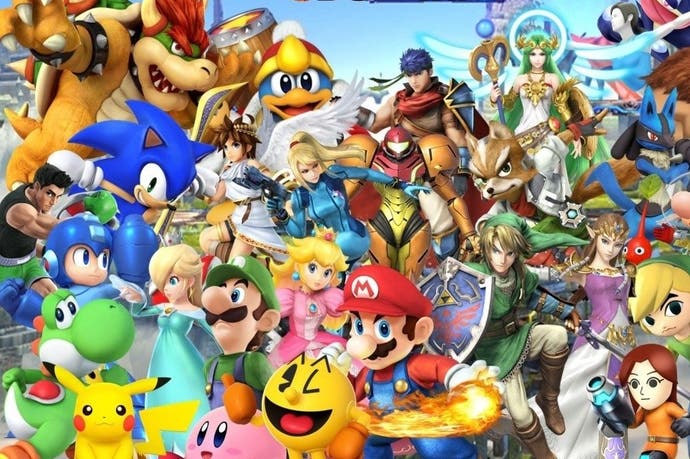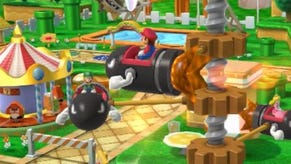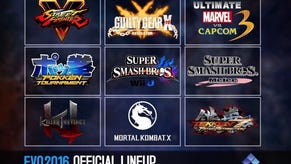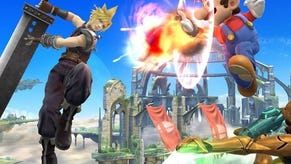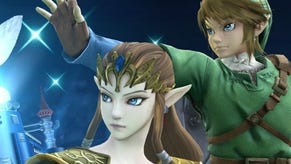Super Smash Bros. for Wii U review
Encyclopaedia Nintendia.
At this stage, the underlying game is almost one of the least interesting things about Super Smash Bros for Wii U. Smash (as it shall henceforth be known, for brevity's sake) is a party game in the sense that it is a game that is also a party. It's a celebration of Nintendo; a get-together for stars of past and present to beat seven bells out of one another. Perhaps more significantly, it's a shindig at which we can be assured of having a good time: we know the guest list is strong, we know we'll get to hear some killer tunes. What we're interested in is the finer details. What surprises will our host Masahiro Sakurai have in store for us this time?
And let's spare a thought for Sakurai, because organising this party must be a logistical nightmare by now. What began as a fun little leisure time experiment is now a phenomenally successful series, and expectations are raised accordingly. We all want more, and so that's what he delivers. More fighters, more stages, more songs, more moves, more modes, more options. More pixels.

It's well worth spending a little time on Smash's presentation. Some will say this is the best-looking game on Wii U. It isn't, but let's not dismiss its visual achievements. It might not be the technological miracle that Smash 3DS was (seriously, compare it to Pokémon, which can't even manage a smooth frame-rate for turn-based combat) but it's sharp, its fighters are nicely rendered and well-animated, and the stage backgrounds are often stunning - sometimes distractingly so. Xenoblade Chronicles' Gaur Plain is a sumptuous sprawl; Orbital Gate Assault is a space opera in miniature; Kalos Pokémon League takes you on a tour of the elemental halls of X and Y's Elite Four; Wuhu Island makes you wonder whether Nintendo's working on Wii U Sports Resort. The pick, perhaps, is Game and Wario's Gamer stage, as the illuminating gaze of 9-Volt's terrifying mother damages any fighter who doesn't retreat into the shadows in time.
The new combatants are an intriguing bunch, too. Little Mac has a powerful ground game but he's weak in the air and struggles to recover from being launched. Animal Crossing's Villager has an unconventional moveset but is devastating in the right hands, while his balloon hat keeps him in the game for longer. Wii Fit Trainer's yoga-centric attacks make her (or him; as with Villager and Fire Emblem's Robin, you can choose either gender) a balanced and versatile choice. Greninja is a personal favourite: the fast-moving Pokémon is thrillingly nimble and responsive, wielding watery swords and shuriken.
At times you wonder whether Nintendo's intentions are entirely innocent - is Shulk here because he's a good fit, or because Xenoblade's getting a 3DS release next year? - but one suspects Sakurai wouldn't include them if he didn't believe they benefitted the game (and Shulk, with his Monado sword and switchable character arts, certainly does). Besides, with Duck Hunt Duo on the roster and the ability to select music from the likes of Captain Rainbow and New Style Boutique, there's plenty of evidence that Smash isn't overly concerned with commercial opportunities.

In terms of pacing, it hits the sweet spot between the blistering intensity of Melee and Brawl's more measured - some would say sluggish - scrapping. It's easy to be snobbish about Smash's merits as a high-level fighting game: I'm no expert, by any means, but to me it shares plenty in common with the tournament favourites. Though there's no danger of players whiffing the input for a special move under pressure and despite the relatively limited move pools for each fighter, it's still about learning the nuances of spacing, timing, reading and anticipating your opponent's attacks. What a pity, then, that there's no tutorial to speak of - the only real way to gauge your progress is to test yourself against high-level AI opponents or head online and battle the best. It's a glaring omission for a game considered worthy of a place at EVO. It might give you a choice between For Fun and For Glory, but it's clear which of the two Nintendo favours.
Which is a perfectly valid choice, of course. Smash is a game that's tuned for fun and plays best when it's embracing its role as an entertainer rather than a competitor - not that the two are mutually exclusive. There's no single-player campaign, though after Brawl's plodding and insipid Subspace Emissary that's a blessing. Instead you've got a Classic mode which has never been better, if only because it pinches Kid Icarus: Uprising's Intensity mechanic, which I honestly believe to be one of the best game design ideas of the past decade. In short: you can increase the challenge to gain better prizes, but you have to spend coins to do so. Essentially you're gambling against your own ego, but it's also a brilliant way of challenging yourself to improve, and allows you to steadily increase the difficulty without the sharp uptick you might get between modes in other fighters. It's also great for novices, too, and if you're getting schooled on a higher level, you can enjoy the cathartic pleasure of taking your frustrations out on ludicrously lightweight opponents at the bottom end of the scale.
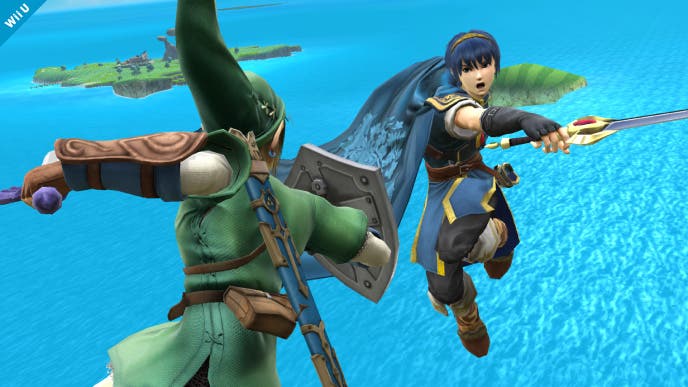
There's plenty of other stuff for solo players, too: the home-run contest with the world's cutest sandbag is back, and there's a strange riff on Angry Birds where you have to whack a bomb into a group of targets. The Event mode presents some creative themed challenges, such as using Jigglypuff's Rest move to send a group of unruly kids to sleep, fighting Dr. Mario as a gradually ailing Wario, or using Wii Fit Trainer to whack a pair of gluttonous opponents while stopping them from scoffing junk food to decrease their damage meter. Master Orders asks you to spend gold to take on a variety of challenges at various difficulty settings, though Crazy Orders is more entertaining as it increases the risk: you'll earn cumulatively better prizes, but if you lose, you'll lose the lot. Oh, and it's against the clock. In a delightfully weird twist, the more damage you take, the more HP you'll have for the final fight against Crazy Hand; giving experts a sterner challenge while rewarding less skilled players who dare to battle on.
At the other end of the scale there's eight-player Smash, a classic case of 'just because you can, doesn't mean you should'. Admittedly, on a few stages it works, because they naturally produce smaller pockets of action. On Gaur Plain, you'll see two or three skirmishes spread across the stage, and the same goes for the labyrinthine Great Cave Offensive - though even on a giant TV this suffers from the same issue as 3DS version, as the camera zooms out to keep all eight fighters on screen and forces everyone to lean forward and squint to make them out. Struggling to keep tabs on the action is a problem on the more compact stages, too: when you're bouncing around the awnings, bunting and speeding traffic of EarthBound's Onett, you'll often only be able to tell where you are by the brightly coloured name tag above your head.
Then there's Smash Tour, a mode I've played four times and have no desire to ever bother with again. It's a bizarre mess of a board game that sees you collecting fighters and power-ups on each turn, facing off against other players you bump into and either stealing or conceding a fighter to them once the skirmish is over. Once the allotted turns are completed, all players face off in a final battle with the combatants they've picked up. The element of chance is part of any board game, but it's possible to end up with one fighter while someone else has six through little fault of your own. It's so unnecessarily busy and rushed that it's difficult to keep track of what's going on, and the only positive to take from it is that Mario Party 10 can't possibly be this bad.
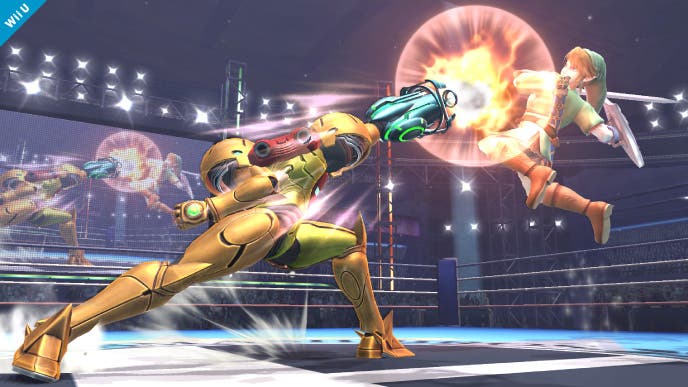
And what of Amiibo? Initially, I was nonplussed with the way Nintendo's new figurines are used, because it seems as if Sakurai has ignored the whole toys-to-life appeal of Skylanders and Disney Infinity. Touch your figure to the NFC sensor on the GamePad and your fighter will appear, though you won't be able to control them. Instead you're invited to feed them various pickups you'll have collected which affect their attack, defence and speed stats - usually boosting one while reducing another, though the better ones convey additional buffs. Then you send them into battle or fight alongside them and they steadily level up, growing more powerful as they go. In theory, they're supposed to learn from and respond to your fighting style, and after a while it did appear my Mario had begun to adopt what I'll euphemistically refer to as my evasive approach to battle. I felt curiously proud as he bravely ran from danger, and while a brawling Tamagotchi wasn't entirely what I expected from the feature, I found it an interesting and worthwhile use of the tech.
A few inconsistencies still niggle. I love Animal Crossing as much as the next megalomaniacal raccoon, but do we really need a New Leaf and a Let's Go to the City stage? Why is eight-player Smash limited to a handful of arenas? Why is there no difficulty modifier in Smash Tour? Why is the Intensity mechanic not used elsewhere? Why is Hawlucha - a Pokémon who seems to have been conceived with an eye to a Smash appearance - not on the roster? And why, four games in, is Assist Trophy Goldeen still using Splash? (Note: One of these questions may have been supplied by my eight-year-old son.) Sakurai's design smarts are wildly underestimated, and there's often method in his madness, with most new elements here adding something to the overall picture. Yet even he occasionally seems flustered by the challenge of beating his past efforts, throwing in ingredients because he feels he has to.
Maybe Smash is the streaky bacon of Nintendo series - strip away the fat and it's not nearly as tasty - and though there's a definite case to answer for design indiscipline, I'm rather fond of its creator's mad scientist approach. Such a bewildering array of options and modes with which to customise your experience - many of them being squirrelled away inside its elaborate nest of menus - means that Smash has something for just about everyone. As a party host, Sakurai's determined to make sure everyone's having a good time.
The result is almost certainly the definitive version of Smash. Not all of it works, but plenty does, leaving us with a fine solo game and a wonderfully, wilfully chaotic multiplayer brawler. Smash is still too unrefined to be the choice of the Nintendo connoisseur, perhaps, but as long as you don't take it too seriously, it is riotously good fun.
